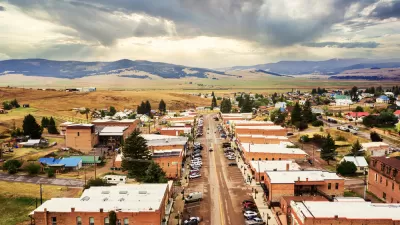A rapidly changing population might make Nevada a more thorough exemplar of the challenges and opportunities presented by the "diversity explosion" than its neighboring state to the west.
According to an article by Alan Greenblatt, "it’s Nevada that, perhaps more than any other state, offers a glimpse into the future. The change that has occurred so rapidly there -- from having a population that was overwhelmingly white to one that will soon be mostly people of color -- is under way in most of the nation, or will be in the coming decades. The Census Bureau has predicted the country as a whole will be majority nonwhite by the year 2043."
The demographic trends underway in Nevada are emblematic of what William Frey has described as the diversity explosion. But part of what makes Nevada a worthy case study on this subject is how it has so far failed to provide its new Latino populations from achieving the same kinds of success as the state's Caucasian population. According to Greenblatt, "[b]y nearly any measure you can think of -- unemployment, high school graduation rates, use of food stamps -- Hispanics aren’t faring as well as Caucasians in Nevada. They also lag behind Hispanics in other Mountain West states, according to a study published last year by the Guinn Center for Policy Priorities."
It's not just Latinos struggling to gain a foothold in Las Vegas; the fastest growing population, Asians and Pacific-Islanders, are also struggling. The article assigns blame to Nevada's poor service infrastructure, which is "starting at the bottom," among other political realities. On education, for instance, the state's policies are described as "just starting to react, 20 years too late" with regard to demographic changes.
Greensplatt connects the state's sluggish policy responses with the incredible rate of growth experienced in the state's metropolitan areas over the past several decades. Greensplatt quotes Betsy Fretwell, Las Vegas city manager, to describe the effect of growth on government policy: "When you’re tripling the number of park acres and going from eight firehouses to 18…a lot of attention gets focused on growth and the development needs of the community."
All of these challenges set aside, Las Vegas still has the rare opportunity to build on the human capital provided by these new immigrant populations—like New York or Chicago of previous centuries.
FULL STORY: Nevada Shines Light Onto America's Future

Maui's Vacation Rental Debate Turns Ugly
Verbal attacks, misinformation campaigns and fistfights plague a high-stakes debate to convert thousands of vacation rentals into long-term housing.

Planetizen Federal Action Tracker
A weekly monitor of how Trump’s orders and actions are impacting planners and planning in America.

San Francisco Suspends Traffic Calming Amidst Record Deaths
Citing “a challenging fiscal landscape,” the city will cease the program on the heels of 42 traffic deaths, including 24 pedestrians.

Defunct Pittsburgh Power Plant to Become Residential Tower
A decommissioned steam heat plant will be redeveloped into almost 100 affordable housing units.

Trump Prompts Restructuring of Transportation Research Board in “Unprecedented Overreach”
The TRB has eliminated more than half of its committees including those focused on climate, equity, and cities.

Amtrak Rolls Out New Orleans to Alabama “Mardi Gras” Train
The new service will operate morning and evening departures between Mobile and New Orleans.
Urban Design for Planners 1: Software Tools
This six-course series explores essential urban design concepts using open source software and equips planners with the tools they need to participate fully in the urban design process.
Planning for Universal Design
Learn the tools for implementing Universal Design in planning regulations.
Heyer Gruel & Associates PA
JM Goldson LLC
Custer County Colorado
City of Camden Redevelopment Agency
City of Astoria
Transportation Research & Education Center (TREC) at Portland State University
Jefferson Parish Government
Camden Redevelopment Agency
City of Claremont





























